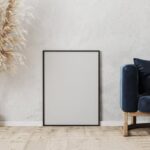Looking to bring a touch of nature into your home? Learn how to decorate with plants in your home and create a fresh and welcoming atmosphere. Plants are not only beautiful additions to any space but also offer numerous benefits for your health, aesthetics, and the environment. From choosing the right plants to stylish planters and pots, this article will guide you through the process of incorporating greenery into your home decor.
Plants have the power to transform a room, adding color, texture, and life to any space. Whether you have a green thumb or not, decorating with plants can be an easy and enjoyable way to enhance your home decor. With the right selection of plants and thoughtful placement, you can create a relaxing and inviting atmosphere that reflects your personal style.
In this comprehensive guide, we will explore the considerations for choosing the right plants for your space, planting and potting tips for indoor plants, creative DIY plant decor ideas, and essential care tips to keep your indoor garden thriving. By the end of this article, you’ll have all the information you need to infuse your home with the beauty and benefits of plants.
Choosing the Right Plants for Your Space
When it comes to decorating your home with plants, it’s important to choose the right plants that will thrive in your specific space. Consider the following factors when selecting plants for your home:
1. Light Requirements: Different plants have different light requirements. Some thrive in bright, direct sunlight, while others prefer low-light conditions. Take note of the natural light in your home and choose plants that will do well in those conditions.
2. Space Constraints: Consider the amount of space you have available for plants in your home. If you’re working with a small space, opt for compact or trailing plants that won’t take up too much room.
3. Maintenance Level: Be honest with yourself about how much time and effort you are willing to put into plant care. If you’re a beginner or know you have a busy lifestyle, choose low-maintenance plants that are more forgiving.
Consider these recommendations when choosing plants for your home:
– Snake Plant: Known for its air-purifying properties and ability to thrive in low light conditions.
– Pothos: A trailing plant that does well in low-light environments and is easy to care for.
– Fiddle Leaf Fig: A popular choice for its large, dramatic foliage, but it requires bright, indirect light.
By considering these factors and recommendations, you can ensure that the plants you choose will not only enhance the aesthetic of your home but also thrive in their new environment. With these considerations in mind, you can create an indoor garden that brings life and beauty into your living spaces while remaining easy to maintain.
Planting and Potting
When it comes to decorating with plants in your home, choosing the right indoor plants is just the first step. Once you’ve selected the perfect greenery for your space, it’s important to understand how to properly plant and pot them to ensure they thrive in your home. Here are some key considerations and recommendations for planting and potting indoor plants:
- Choose the right size of pot: Make sure the pot is large enough to accommodate the plant’s root ball without being too big, which can lead to overwatering.
- Use well-draining soil: Opt for a high-quality potting mix that allows water to drain easily, preventing root rot.
- Consider drainage: If your pot doesn’t have drainage holes, consider using a layer of gravel at the bottom to promote drainage.
- Repot when necessary: As your plants grow, they may outgrow their pots. Be prepared to repot them into larger containers as needed.
In addition to these basic considerations, it’s important to research the specific needs of each plant you bring into your home. Different species have different requirements when it comes to moisture levels, sunlight, and humidity, so be sure to tailor your planting and potting approach accordingly.
What You Need for Indoor Planting and Potting
When it comes to planting and potting indoor plants, having the right tools and materials on hand is essential for success. Here are some items you’ll need:
- Gloves: Protect your hands from dirt and potential allergens
- Trowel or hand shovel: For scooping soil into pots
- Pots and saucers: Choose containers that fit both your decor style and the needs of your plants
- Fertilizer: Select a suitable fertilizer based on the needs of your specific plants
By understanding the basics of planting and potting indoor plants, as well as having the necessary tools on hand, you can create a thriving indoor garden that enhances both the aesthetic appeal and air quality of your home.
Placement Matters
When it comes to decorating with plants in your home, the placement of your greenery is key to achieving maximum impact. Whether you have a small apartment or a spacious house, there are several strategic spots where you can position your plants to enhance the overall aesthetic of your space.
One of the most popular places to display indoor plants is on windowsills. Not only does this location provide ample natural light for your green companions, but it also creates a charming and picturesque scene, especially if you have a variety of plant heights and types. If you have limited space, consider using hanging planters near windows to add visual interest without taking up precious floor space.
Another impactful area for plant placement is in corners or empty nooks. Adding a tall potted plant or a collection of smaller ones can instantly breathe life into an underutilized space. Plants placed in corners can soften the overall atmosphere of a room and provide balance to other design elements.
Additionally, don’t overlook the potential of using plants as centerpieces on tables or shelves. This is particularly effective in areas where you want to create a focal point or draw attention. Just be mindful not to overcrowd surfaces with too many plants, as this can lead to visual clutter rather than aesthetic appeal.
| Plant Placement Tips | Ideas |
|---|---|
| Windowsills | Utilize natural light and add visual interest |
| Corners/Nooks | Breathe life into underutilized spaces |
| Tables/Shelves | Create focal points and draw attention |
Stylish Planters and Pots
When it comes to incorporating plants into your home decor, the right planters and pots can make a significant impact on the overall aesthetic of a space. Not only do they serve as functional vessels for your greenery, but they also contribute to the visual appeal of your indoor garden. When choosing planters and pots for your home, consider the following factors:
Material and Style
The material and style of your planters can enhance the overall look of your space. For a modern and minimalist vibe, opt for sleek metal or ceramic planters. If you want to add a bohemian touch to your decor, consider woven or macrame plant hangers for hanging plants.
Size and Proportion
Consider the size and proportion of your planters in relation to the size of your plants and the space where they will be placed. Large floor planters are great for statement plants like fiddle leaf figs or monstera, while small succulents look best in mini pots or hanging planters.
Color and Texture
Add visual interest by choosing planters with different colors and textures that complement your existing decor. Earthy tones like terracotta or neutral colors like white can blend seamlessly into any design scheme, while colorful or patterned pots can serve as accent pieces in a room.
In addition to traditional planters, consider incorporating unconventional containers such as vintage tins, glass jars, or decorative baskets to add personality to your indoor garden. With careful consideration of material, style, size, proportion, color, and texture when selecting planters and pots, you can effortlessly enhance the beauty of your home decor with plants.
DIY Plant Decor
When it comes to decorating with plants in your home, there are countless creative and cost-effective ways to display your indoor garden. Not only do plants add a touch of nature and greenery to your space, but they also have the ability to lift your mood, reduce stress, and improve overall well-being. Whether you live in a small apartment or a spacious house, there are plenty of DIY plant decor ideas that can fit any style and budget.
Suspended Planters
Suspended planters are a great way to add visual interest to any room while maximizing space. You can create your own macrame hangers for hanging pots or repurpose old baskets as plant holders. Consider hanging multiple plants at different levels for an eye-catching display.
Repurposed Containers
Get creative by using repurposed containers such as mason jars, tin cans, or even teacups as unique planters for small succulents or herbs. Not only is this an eco-friendly option, but it also adds a charming touch to your home decor.
Vertical Gardens
If you’re short on floor space, consider creating a vertical garden using wall-mounted shelves or hanging planters. This not only adds greenery to your walls but also allows you to grow a variety of plants without taking up valuable floor space.
By incorporating these DIY plant decor ideas into your home, you can create a personalized and lively atmosphere while reaping the benefits of having plants indoors. Remember to choose plants that thrive in your specific environment and don’t be afraid to let your creativity shine when it comes to displaying them in unique and innovative ways.
Caring for Your Indoor Garden
In addition to light and water, proper potting and soil are also key elements in caring for indoor plants. It is important to choose the right size of pot for each plant, as well as ensuring that there are drainage holes to prevent water from accumulating and causing root rot. Using high-quality potting mix tailored to the specific needs of your plants will also contribute to their overall health.
It’s also important to regularly clean and dust the leaves of your indoor plants to allow them to properly absorb light and air. Depending on the type of plant, some may benefit from misting their leaves with water to increase humidity levels. Regularly inspecting your plants for any signs of pests or diseases is also crucial in maintaining a healthy indoor garden.
| Indoor Plant Care | Tips |
|---|---|
| Light and Water | Research specific needs; provide adequate light and water |
| Potting and Soil | Use proper pots and soil mix; ensure drainage holes |
| Cleaning and Maintenance | Dust leaves, inspect for pests, mist if needed |
The Benefits of Decorating With Plants
In conclusion, decorating with plants in your home brings numerous benefits that go beyond just aesthetics. The presence of plants in your space can significantly impact your health and well-being.
Not only do they purify the air by removing toxins and increasing oxygen levels, but they also have been shown to reduce stress, improve concentration, and even boost mood. By incorporating a variety of plants into your home decor, you can create a more vibrant and inviting environment that contributes to your overall wellness.
Furthermore, using plants as part of your interior design adds an element of natural beauty to any room. Whether you prefer lush green foliage or colorful flowering plants, there are endless options for bringing a touch of the outdoors inside.
The visual appeal of plants can soften harsh lines and add texture to a space, creating a more organic and harmonious atmosphere. With the right placement and styling, plants can become focal points that enhance the overall aesthetic of your home.
Lastly, decorating with plants is also beneficial for the environment. By choosing sustainable and eco-friendly planters, pots, and soil mixes, you can reduce your carbon footprint and contribute to a healthier planet. Additionally, growing certain types of plants indoors can help promote biodiversity and support conservation efforts. Overall, incorporating plants into your home decor not only enhances the beauty of your space but also aligns with sustainable living practices that benefit both you and the world around you.
In summary, learning how to decorate with plants in your home allows you to create a healthier, more visually appealing environment while also contributing to environmental sustainability. From choosing the right plants for each room to carefully considering their placement and care requirements, there are endless creative possibilities for incorporating greenery into your living space.
Whether through stylish planters or DIY displays, investing in indoor gardening is an investment in both your personal well-being and the world we all share.
Frequently Asked Questions
How to Decorate Your House With Indoor Plants?
Decorating your house with indoor plants can bring life and color into your space. To start, consider the lighting and humidity levels in different areas of your home to choose the right plants. You can also play with different sizes, textures, and colors of pots to add variety to your plant decor.
How Do I Arrange My Living Room With Plants?
When arranging your living room with plants, consider using them to create visual interest and balance. Use tall floor plants or hanging plants to draw the eye upwards, while smaller plants can be grouped on tables or shelves for a cohesive look. Be mindful of the natural light in the room when deciding where to place your plants.
How Do You Use Plants as Decorations?
Using plants as decorations can be a versatile way to bring nature indoors. Consider using a mix of large statement plants, such as fiddle leaf figs or monstera deliciosas, alongside smaller succulents or cacti for variety.
You can also incorporate them into different rooms of your home, from the bathroom to the kitchen, to add freshness and style without overwhelming the space.

I’m thrilled to be your companion on this exciting journey through the world of home decor and design. With a passion for turning houses into homes and a keen eye for the finer details, I’m here to help you transform your living spaces into beautiful, functional, and meaningful havens.





